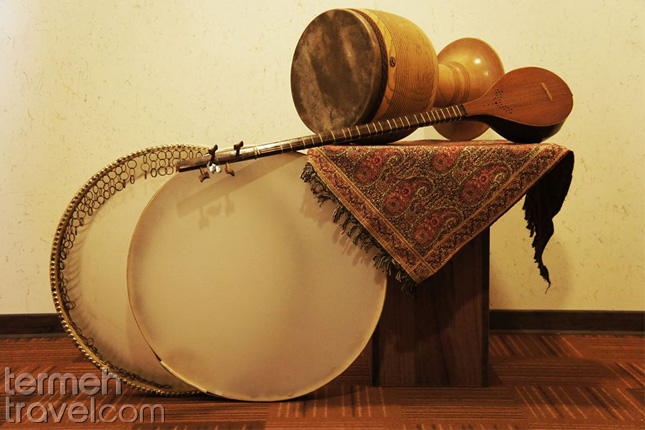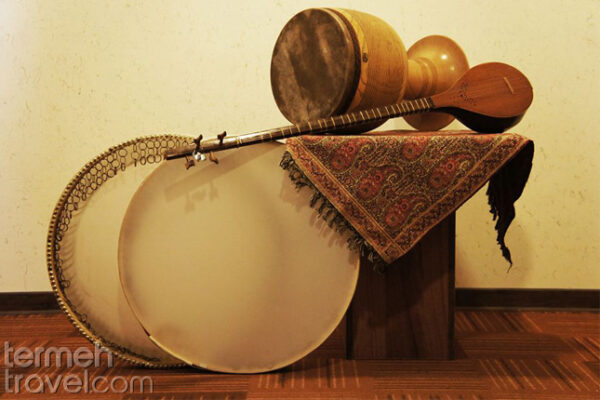Golden sun rays shine through the ancient ruins and dance on the surface of the lake. The magical Takht-e Soleyman looks more mysterious when you are staring at the deep deceptive water in pure silence, while the appealing breeze is creating slow-moving waves. Tracing the history of this ancient site can lead us to mythical stories, but nothing can deny the fact that Takht-e Soleyman is a significant part of Persian history and culture.
Where is Takht-e Soleyman?
Located in West Azarbaijan, Takht-e Soleyman can be found in almost 40 minutes northeast of Takab, which is a city of this province. In order to get there, you can first have a trip to the capital city of West Azarbaijan called Urmia. Then by using a private car, you can arrive at the Takab that is 300 kilometers away from Urmia and finally go to Takht-e Soleyman complex.
Table of Contents
What Do You Know About the History of Takht-e Soleyman?
Just like Persepolis, which is truly a treasure from the Achaemenid Dynasty, Takht-e Soleyman is an exceptional remembrance of the Sassanid Empire. The skilled architects living in the Sassanid Dynasty built a fantastic structure that was used as a Zoroastrian holy temple about one thousand and six hundred years ago. Although the archeologists could find some evidence that shows that this place was a sort of residential area during Paleolithic and later on the Achaemenid period, excavation is almost impossible without doing damage to the Sassanid-maid structure.
There are some mythical stories about Takht-e Soleyman, which makes this place more attractive. Old tales say that when Jesus drank the wine from the Grail on the Last Supper, he buried the cup in the lake located inside Takht-e Soleyman.
Another story indicates that if you want to be rich, you should search the lake and look for ancient treasures that are hidden deep inside the water. The reason behind this myth is that many years ago, when the Arab’s Army attacked Iran, the people who were living there buried all their jewelry in the water and asked Anahita, the divinity of water and fertility in Zoroastrianism to protect them. However, since the water of the lake is not drinkable and is saturated with minerals, searching the water would be extremely difficult.
Stories aside, this masterpiece is one of the most visited sites in West Azerbaijan Province and attracts many domestic and foreign tourists every year to enjoy visiting Takht-e Soleyman.
What Is the Meaning of Takht-e Soleyman?
Takht-e Soleyman is also known and called as “Farah Spah” and “Ganjak.” However, the word Takht-e Soleyman can be literally translated to “the Throne of Solomon.” Some historians and linguists believe that the reason behind this name goes back to the Sassanid Period when Arabs attacked Iran. Since Iranians wanted to keep this place safe, they mentioned the name of Solomon, who is a prophet respected by Muslims.
Also, a story says that this place was the home of Solomon, and his ring is buried there as well. According to the myths, with the help of a superpower, Solomon built this exceptional structure, and it cannot be made by human beings since the whole structure is ahead of its time.
What Are the Different Parts of Takht-e Soleyman Complex?
Both natural phenomena and human beings’ skills came together to create an outstanding structure. There are different places in the Takht-e Soleyman complex that can let your imagination fly to think about the stories behind them and how they were built. Also, all of these parts are certainly worth visiting.
The Forbidden Lake
While you visit Takht-e Soleyman and enjoy walking around ancient ruins, the pellucid and enchanting water of the natural lake catches your eyes and captivates you. However, those who surrendered themselves to the spell of the lake were never found. The water looks innocent, calming, and purely blue. However, the lake has 120 meters depth, and the sediment and mineral water of the lake makes it undrinkable. Also, the gravity of it pulls any living creature inside and does not let them swim and leave the water. Therefore, it is significant to pay attention to the no swimming signs all around the lake.
The Azargoshasb fire temple
During the Sassanid Empire, the Zoroastrian fire temple was built to protect a sacred seven hundred years old fire to show the Zoroastrians authority. The Azargoshasb was not an ordinary fire temple; the king, his royal family, and all the commanders would go there to worship Ahura Mazda. Therefore, this place became the principal temple.
Today, there is not much left from the glorious fire temple other than some columns and walls due to the attacks of different countries. However, you can still find the signs of Persian Architectural design in the forms of entrances and walls and the materials which were used to build this place.
The Temple of Anahita
Next to the Azargoshasb Fire Temple, in the Takht-e Soleyman Complex, you can find the Temple of Anahita. By observing the lake in the complex, having a temple for the divinity of water in Persian Mythology is not a surprise. Although Zoroastrians were monotheistic, they believed in different deities that had the power to help them with different situations.
Also, having both fire and water as two vital elements of Zoroastrians together could make power and good energy. Therefore, Zoroastrians believed that the Takht-e Soleyman complex is a perfect place for chanting prayers.
Solomons Prison
The place that is said to be the prison of demons is located 3 kilometers west of Takht-e Soleyman. According to legends, Solomon used to imprison the demons inside the cavity of the hill. Also, the Zoroastrians used to use this place to offer their sacrifices to Ahura Mazda. The studies have shown that this cavity is shaped due to the Sedimentation of the lake’s water minerals.
What Is the Best Time to Visit Takht-e Soleyman?
Since Takht-e Soleyman is located in one of the coldest provinces in Iran, the best time to visit this complex is during spring and summer, especially between late April to early June. During this time, you can enjoy the green hills and shiny, pleasant sun lights while you are exploring different parts of Takht-e Soleyman Complex.
If you are a fan of spooky and mysterious stories or you are in love with history and architecture, Takht-e Soleyman is a perfect place for you to spend your time and see a small glimpse of the beauty of Iran.
Works Cited
Aman-Allahi, Hamid, The Cultural and Historical Background of Takht-e Soleyman, 2016















Leave a Comment